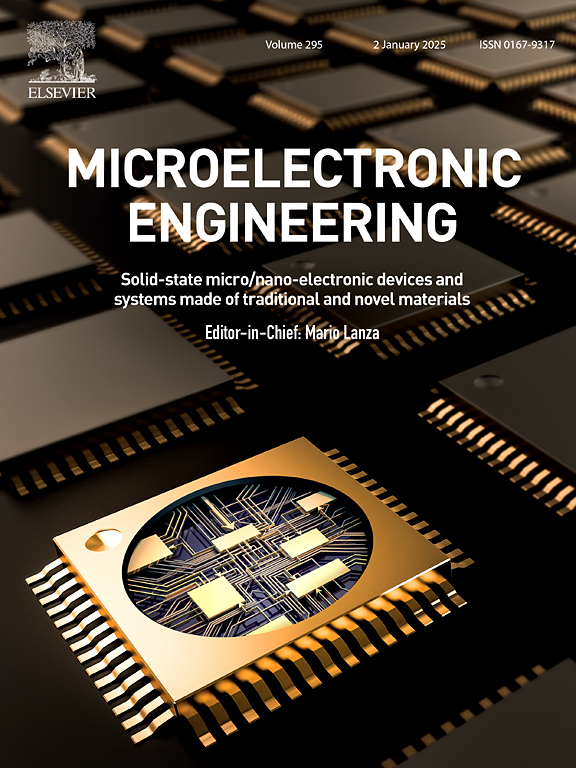一种新型的h型场效应管,在先进的技术节点上提高了场效应管的性能
IF 3.1
4区 工程技术
Q2 ENGINEERING, ELECTRICAL & ELECTRONIC
引用次数: 0
摘要
在这项工作中,提出了一种新型的h形fet (pHFET)来解决互补场效应晶体管(CFET)结构中n/p驱动的电流失配问题。它是通过二次翅片图片化和选择性横向外延来实现的,形成双(110)主导定向翅片,以扩大有效通道面积(Aeff)和提高孔迁移率。通过TCAD仿真对fet和fet的性能进行了评价。通过与传统nsfet的详细比较,证实了phfet的应用潜力。根据设计-技术协同优化(DTCO)原则,对Hfin和Tfin等关键结构参数进行优化,以提高器件性能。在优化的尺寸下,所提出的pHFET比传统的nsfet实现了24%的离子提高和6.2%的内在延迟降低。电路级的实现在反渗透,逆变器,和6 T-SRAM确认其优越的性能,特别是高速应用。此外,本文还提出并讨论了由HFET堆叠而成的阶梯场效应管,以扩展HFET的可扩展性和实用性。本文章由计算机程序翻译,如有差异,请以英文原文为准。
A novel H-shaped FET for enhanced CFET performance at advanced technology node
In this work, a novel H-shaped pFET (pHFET) is proposed to address the n/p driven current mismatch in the complementary field effect transistor (CFET) architecture. It is realized through secondary fin patterning and selective lateral epitaxy, forming dual (110) dominant oriented fins to enlarge effective channel area (Aeff) and enhance hole mobility. The performance of H-shaped FETs (HFETs) for both nFET and pFET is evaluated through TCAD simulations. Detailed comparison with conventional NSFETs confirms the application potential of pHFETs. Following the principles of design-technology co-optimization (DTCO), key structural parameters, including Hfin and Tfin, are optimized to enhance device performance. Under the optimized dimensions, the proposed pHFET achieves a 24 % ION improvement and 6.2 % reduction in intrinsic delay over conventional NSFETs. Circuit-level implementations in RO, Inverter, and 6 T-SRAM confirm its superior performance, especially for high-speed applications. Additionally, the ladder-FETs, which formed by stacking HFET, are also presented and discussed to extend the scalability and practical applicability of HFETs.
求助全文
通过发布文献求助,成功后即可免费获取论文全文。
去求助
来源期刊

Microelectronic Engineering
工程技术-工程:电子与电气
CiteScore
5.30
自引率
4.30%
发文量
131
审稿时长
29 days
期刊介绍:
Microelectronic Engineering is the premier nanoprocessing, and nanotechnology journal focusing on fabrication of electronic, photonic, bioelectronic, electromechanic and fluidic devices and systems, and their applications in the broad areas of electronics, photonics, energy, life sciences, and environment. It covers also the expanding interdisciplinary field of "more than Moore" and "beyond Moore" integrated nanoelectronics / photonics and micro-/nano-/bio-systems. Through its unique mixture of peer-reviewed articles, reviews, accelerated publications, short and Technical notes, and the latest research news on key developments, Microelectronic Engineering provides comprehensive coverage of this exciting, interdisciplinary and dynamic new field for researchers in academia and professionals in industry.
 求助内容:
求助内容: 应助结果提醒方式:
应助结果提醒方式:


